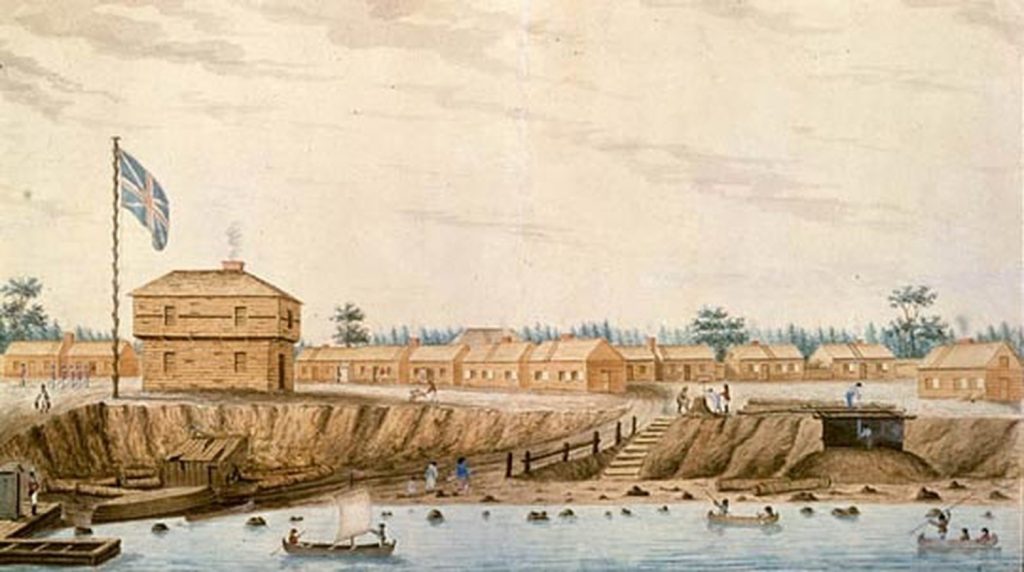
For nearly 20 years, the settlers around the town of York expected an invasion by the Americans. Yonge Street had been conceived in 1793 as a way for British troops to avoid the Great Lakes and the American border.
The War of 1812 made it official. Many farmers along the Yonge Street corridor headed down to Fort York to join the militia. And there they waited – 300 militia along with 300 soldiers and 100 Indians. By the winter of 1813, there still had been no invasion.
A growing number of grew impatient with the waiting, threatening to return to their farms. Even though they’d seen no action, some their neighbours had. Duke Kendrick, one of the original settlers near Yonge and Lawrence, was killed in battle in the Niagara Peninsula. Thomas Humberstone, who farmed at Yonge and Shepard, fought as a lieutenant in the Battle of Queenston Heights and helped carry General Brock’s body from the field. He was captured by the Americans and was a prisoner until the war ended. A son of Cornelius Von Nostrand, who farmed down in the Yonge Street hollow, was killed in the same battle.
Then, on April 26, 1813, 14 American ships appeared off the Lake Ontario shore. The Fort York garrison failed to stop a U.S. landing near the CNE grounds. After a gunner’s match accidentally ignited a powder box near the fort, killing a dozen men, the militia began to flee. Some headed straight back up Yonge to their farms. Others followed the soldiers, already in retreat, to the town of York. There they set fire to a large British ship in the harbour, to keep it out of American hands.
As part of the evacuation, the British soldiers blew up the fort’s powder magazine that showered the area with boulders, killing about 250 men, mostly Americans. In all, about 10 militia died in the battle at York.
The Americans, no doubt angered by their losses, looted the town of York and were likely the ones who set fire to the legislative building. Despite the loss and the carnage, the Americans soon left, their victory leaving little impact on the day-to-day activities in the region.
However, the battle did leave scars. Those who fought in the militia were regarded as heroes. Those who rooted for the Americans – and there were many – were labeled traitors. Henry Mulholland, a farmer on Bathurst north of Lawrence, was a veteran of the Stoney Creek and Lundy’s Lane battles.
Shortly after returning home from the York battle, Mulholland ran into John Finch (yes, the farmer whose name is on the avenue in North York) who was lugging ploughshares home that were given to him by the Americans. Finch castigated Mulholland for fighting the Americans, telling him he hoped the U.S. would now put an end to tyrannical British rule.
After the American soldiers left, Mulholland informed on Finch who was formally accused of aiding the enemy.
Gary Schlee has been a resident of Bedford Park since 1991. As an author and historian, he has written many articles about the history of our area, notably from 2003-2012, for Community Life published by Fairlawn Avenue United Church (FAUC). This article originally appeared in the Fall 2005 issue. BPRO is grateful to Gary and FAUC for kindly and generously authorizing us to reprint these articles on our website. Please come back regularly to see additional articles as we post them.
